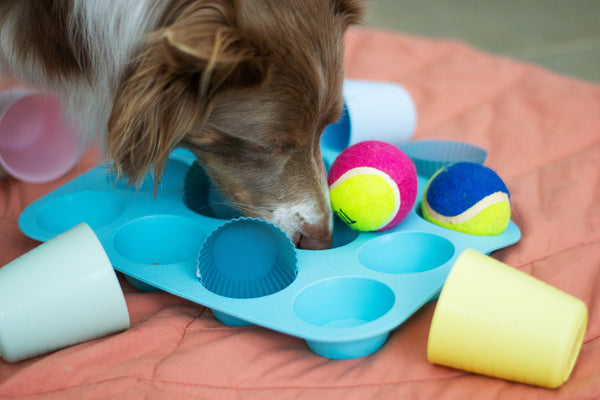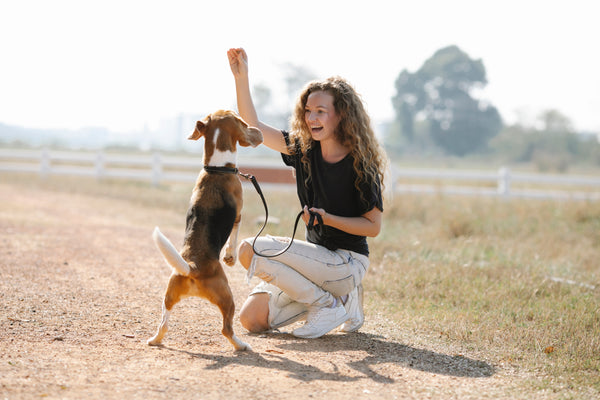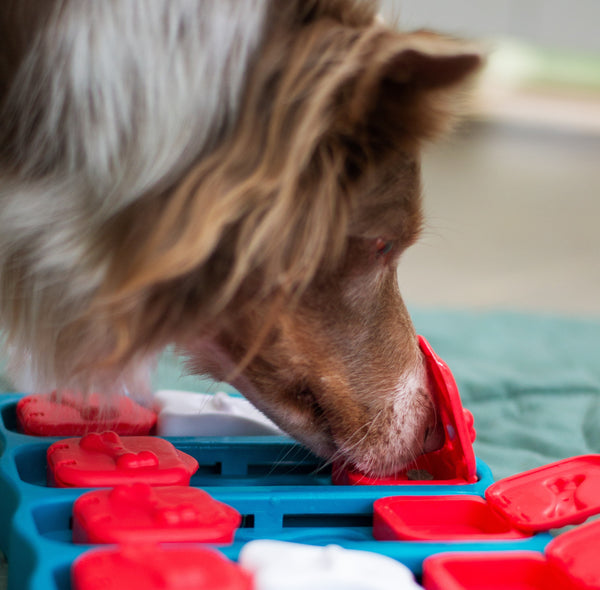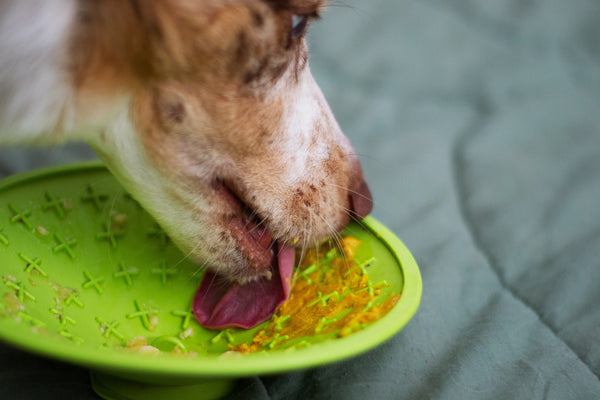We all know how much joy and companionship our furry friends bring into our lives. From wagging tails to warm purrs, their presence can truly brighten our days. But have you ever stopped to think about their mental well-being? Just like us, pets need mental stimulation and engagement to thrive. That's where mind games come in.
In this article, we'll explore the fascinating world of mind games for pets and delve into the various ways you can keep your beloved companions mentally stimulated and engaged. Whether you have a curious cat, an energetic dog, or a small critter, these games and activities are designed to challenge their minds, prevent boredom, and enhance their overall quality of life.
So, let's embark on this exciting journey together and discover how to unlock the full potential of your pet's intelligence while deepening the bond you share. Get ready to unleash their inner genius and witness the incredible transformation that mental stimulation can bring to their lives. Let's dive right in!
Why Mental Stimulation Matters for Pets
Pets are not just cute and cuddly companions, they are also intelligent and curious creatures that need mental stimulation to thrive. Mental stimulation is the process of providing your pet with challenges, puzzles, games, and activities that engage their brain and senses. It is essential for your pet’s well-being, happiness, and health.

Mental stimulation can benefit your pet in many ways, such as:
- Preventing boredom and behavioral problems
- Reducing stress and anxiety
- Improving learning and memory
- Enhancing cognitive function and preventing cognitive decline
- Strengthening the bond between you and your pet
Signs of Boredom and Stress in Your Furry Friend
How can you tell if your pet is bored or stressed? Here are some common signs to look out for:
- Destructive behavior: Your pet may chew, scratch, or dig on furniture, shoes, plants, or other objects to relieve their frustration or anxiety.
- Excessive barking, meowing, or vocalizing: Your pet may make loud noises to get your attention or express their discontent.
- Overeating or under-eating: Your pet may lose their appetite or eat more than usual to cope with their emotions.
- Lethargy or restlessness: Your pet may sleep more than usual or pace around the house without a clear purpose.
- Aggression or fearfulness: Your pet may snap, bite or growl at you, other animals or strangers, or hide under the bed or in a corner.
- Repetitive behavior: Your pet may lick, groom, or scratch themselves excessively, or chase their tail or shadows.
Tips and Tricks to Keep Your Furry Friend Mentally Stimulated and Engaged
Here are some tips and tricks to keep your pet mentally stimulated and engaged:
Puzzles and Toys
Puzzles and toys are objects that require your pet to use their senses, intelligence, and creativity to access a reward, such as food or fun. They can provide hours of fun and challenge for your pet while satisfying their natural instincts to hunt, forage, play, and manipulate.
There are many kinds of puzzles and toys available that are specifically designed for pets. Some examples are:

1) Treat-dispensing toys: These are toys that release food or treats when your pet interacts with them in a certain way. For example, Kong toys are rubber toys that you can stuff with food or treats that your pet has to lick or chew to get out.
Other examples are balls or cubes that you can fill with kibble or treats that your pet has to roll or shake to make them fall out.
2) Interactive toys: These are toys that respond to your pet’s actions or movements with sounds, lights, or motions. For example, laser pointers are devices that project a red dot that your pet can chase around. Other examples are squeaky toys that make noises when your pet bites them or battery-operated toys that move or vibrate when your pet touches them.
3) Snuffle mats: These are mats made of fleece or other fabrics that have multiple layers or pockets where you can hide food or treats for your pet to sniff out. They mimic the natural behavior of dogs and cats to use their noses to find food in grass or dirt.
4) Puzzle boxes: These are boxes or containers that have different compartments or openings where you can hide food or treats for your pet to find. They require your pet to use their paws or mouth to open, slide, lift, or flip the parts to access the reward.
To use these puzzles and toys with your pet, you can follow these tips:
-
Hide food or treats in different compartments or locations each time to keep it interesting and challenging for your pet.
-
Rotate the puzzles and toys regularly to prevent boredom and habituation.
-
Choose puzzles and toys that match your pet’s size, strength, skill level, and interest. Start with easy ones and gradually increase the difficulty as your pet learns.
-
Supervise your pet when they play with puzzles and toys to ensure their safety and prevent choking or swallowing hazards.
- Praise and reward your pet when they solve the puzzles or play with the toys to encourage them.
Games and Training
Games and training are activities that involve physical movement, mental stimulation and social interaction between you and your pet. They can provide fun and exercise for both of you while strengthening your bond and communication.
They can also teach your pet new skills, behaviors and commands that can improve their manners, obedience and confidence.
There are many kinds of games and training that you can play with your pet. Some examples are:
1) Fetch: This is a game where you throw a ball, stick or toy for your pet to chase and bring back to you. It is a great way to exercise your pet’s body and mind while satisfying their instinct to retrieve.
2) Tug-of-war: This is a game where you and your pet pull on opposite ends of a rope, toy or cloth. It is a great way to exercise your pet’s jaw, neck and shoulder muscles while satisfying their instinct to tug and shake.
3) Hide-and-seek: This is a game where you hide from your pet and call them to find you. It is a great way to exercise your pet’s nose, eyes and ears while satisfying their instinct to search and track.
4) Agility: This is a sport where you guide your pet through a course of obstacles, such as jumps, tunnels, ramps, poles, etc. It is a great way to exercise your pet’s agility, speed and coordination while satisfying their instinct to run and jump.
5) Obedience: This is a type of training where you teach your pet basic commands, such as sit, stay, come, and heel. It is a great way to exercise your pet’s brain and attention while satisfying their instinct to please and follow.
6) Tricks: This is a type of training where you teach your pet fun or useful behaviors, such as shake, roll over, play dead, fetch the newspaper, etc. It is a great way to exercise your pet’s creativity and memory while satisfying their instinct to learn and perform.

To play these games and train your pet, you can follow these tips:
-
Use positive reinforcement, such as treats, praise or toys, to reward your pet for doing what you want them to do. Avoid using punishment, such as yelling, hitting or scolding, to correct your pet for doing what you don’t want them to do.
-
Make it fun and rewarding for both of you. Use a happy and enthusiastic tone of voice and body language to show your pet that you enjoy playing with them. Vary the rewards and games to keep it interesting and exciting for your pet.
-
Vary the difficulty and duration of the games and training sessions. Start with easy and short ones and gradually increase the challenge and length as your pet improves. Avoid making it too hard or too long that your pet gets frustrated or bored.
- Find a suitable space and time for the games and training sessions. Choose a place that is safe, comfortable, and free of distractions for both of you. Choose a time when both of you are in a good mood and have enough energy.
Socialization and Exploration
Socialization and exploration are activities that expose your pet to new people, animals, places, sounds, smells, and other stimuli. They can provide enrichment and learning opportunities for your pet while expanding their horizons and experiences.
They can also prevent or reduce some of the common fears and phobias that affect pets, such as strangers, loud noises, cars, etc.
There are many ways to socialize and explore with your pet. Some examples are:
1) Introducing them to new people: You can introduce your furry friend to different kinds of people, such as children, seniors, men, women, etc. You can also introduce them to people wearing different kinds of clothes or accessories, such as hats, glasses, masks, etc.
2) Introducing them to new animals: You can introduce your pet to different kinds of animals, such as dogs, cats, birds, rabbits, and more. You can also introduce them to animals of different sizes, breeds, colors and personalities.

3) Taking them to new places: You can take your pet to different kinds of places, such as parks, beaches, forests, or farms. You can also take them to places with different kinds of environments or features, such as grassy areas, sandy areas, or water areas.
4) Exposing them to new sounds: You can expose your pet to different kinds of sounds, such as music, applause, fireworks, and vacuum cleaners. You can also expose them to sounds of different volumes, pitches, and durations.
5) Exposing them to new smells: You can expose your pet to different kinds of smells, such as flowers, fruits, spices, perfumes, etc. You can also expose them to smells of different intensities, qualities, and sources.
To socialize and explore with your pet, you can follow these tips:
-
Use a leash or harness when needed to ensure your pet’s safety and control. You can also use a crate or carrier when transporting your pet to new places.
-
Expose your pet gradually and calmly to new stimuli. Start with low levels of intensity, distance, and duration and gradually increase them as your pet gets used to them. Avoid forcing or rushing your pet into situations that they are not ready for or comfortable with.
-
Respect your pet’s signals and boundaries. Pay attention to your pet’s body language and vocalizations to understand how they feel about the new stimuli.
If they show signs of fear, anxiety, stress, or aggression, such as cowering, trembling, panting, growling, or snapping, stop the exposure and comfort your pet. If they show signs of curiosity, interest, excitement, or happiness, such as through wagging, sniffing, licking, or playing, continue the exposure and reward your pet.
-
Reward your pet for being curious and friendly. Use positive reinforcement, such as treats, praise, or toys, to encourage your pet to explore and interact with new stimuli. Avoid using punishment, such as yelling, hitting, or scolding, to discourage your pet from being fearful or aggressive.
-
Monitor your pet’s reactions and emotions. Observe how your pet responds to new stimuli and adjust your pace and approach accordingly. Some pets may need more time and patience than others to get used to new stimuli.
Some pets may also have preferences or dislikes for certain stimuli and may not enjoy all of them equally.
Tips and Tricks for Making Mind Games Fun and Safe for Your Pet
Mind games are meant to be fun and rewarding for your pet, but you also need to make sure they are safe and appropriate. Here are some tips and tricks for making mind games fun and safe for your pet:
-
Start with easy games and gradually increase the difficulty as your pet progresses.
-
Use high-value treats or toys as rewards and vary them to keep your pet interested.
-
Keep the sessions short and end on a positive note.
-
Praise and encourage your pet throughout the game.
- Monitor your pet’s body language and stop the game if they show signs of stress, frustration, or fatigue.
-
Supervise your pet at all times and remove any potential hazards or choking risks.
- Respect your pet’s limits and preferences and don’t force them to play if they are not in the mood.
Conclusion
Mental stimulation is essential for your pet’s well-being. It helps them to stay alert, curious, and happy, as well as prevent them from feeling bored or stressed.
It also benefits you by enhancing your relationship with your pet, reducing your stress levels and improving your mood.
By following the tips and tricks we shared in this blog post, you can keep your furry friend mentally stimulated and engaged.
Whether you have a dog, a cat, or any other furry companion, you will find some ideas that suit your pet’s personality and needs.















